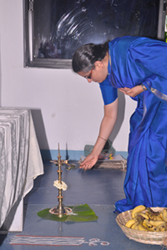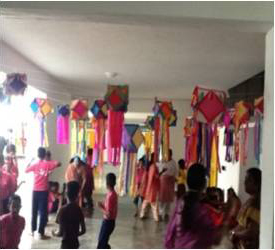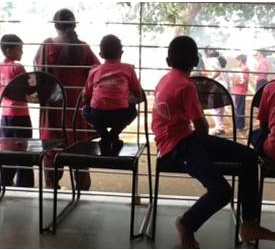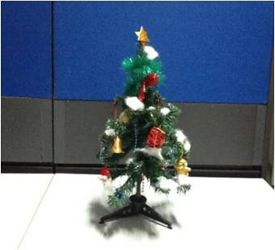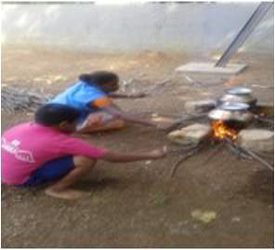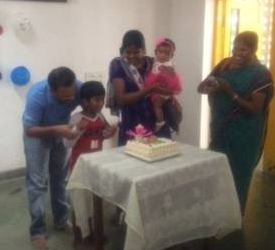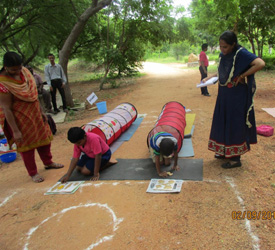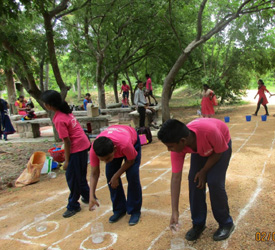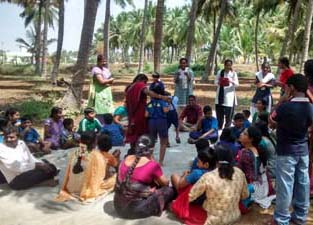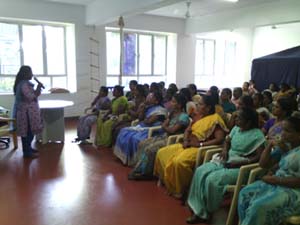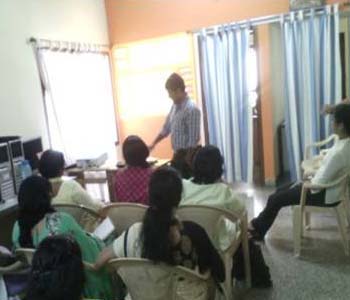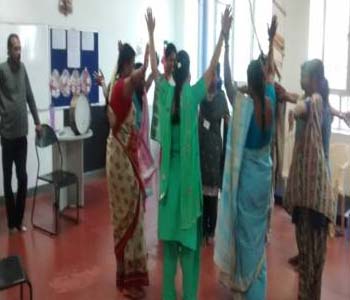1. TEACCH:
methodology is implemented, which is Treatment and Education of Autistic and Communication Handicapped Children. It is one of the globally recognized methods employed to teach children with ASD.
TEACCH is based on the "Culture of autism", which means to understand the characteristics and pattern of thinking of the individuals with autism using the intervention of structured teaching. It is highly dependent on structure, organization, visual information, and routines.
The key elements of "Structured Teaching" include:

- A highly structured physical environment and development of visual boundaries
- Using visual supports to help students learn and process information
- Utilizes shedules and visual work systems
- Contains visually structured tasks
- It can be generalized in various settings
2. ABA: Applied Behavioural Analysis:
Applied Behaviour Analysis is the process of systematically applying interventions based upon the principles of learning theory to improve socially significant behaviours to a meaningful degree, and to demonstrate that the interventions employed are responsible for the improvement in behaviour. It focuses on the principles that explain how learning takes place. Positive reinforcement is one such principle. When behaviour is followed by some sort of reward, the behaviour is more likely to be repeated. Through decades of research, the field of behaviour analysis has developed many techniques for increasing useful behaviours and reducing those that may cause harm or interfere with learning. Applied behaviour analysis (ABA) is the use of these techniques and principles to bring about meaningful and positive change in behaviour.
3. Use of Visual Aids: Visual Schedules:

- Providing a daily schedule in a visual format will make the day predictable, ease transitions and reduce stress;
- Full day, may break the day into sections, or display only a part of the day at a time.
- May use photos, line drawings, picture symbols or words
- Reminders of what to do, such as posted rules, “to do” check lists
- Charts displaying consequences for appropriate actions
- Visually displaying free time or other choices helps child to understand process of decision making
- Presenting a card is often easier for the child than asking for help. Using cue cards for the child to give to an adult or to place in a certain location is helpful
- A teacher provides visual schedules of the day’s events in a location easily seen by the student. A visual schedule is written out and paired with picture symbols to increase understanding.
- A teacher provides individual student schedules attached to the student’s desk for accessibility.
- Both types of schedules are created using Board maker, a program that pairs text with picture symbols, which can often be acquired from the school.
- Teaching social skills to students with ASD is extremely important, and is beneficial not only for the student but for classmates as well.
- There is evidence that PECS is easily learned by most students, with its primary benefit being a means of communication for children and adults who have limited or no speech due to autism or other communication disorders. With regard to the intervention setting for training, there is evidence that PECS is most readily learned when instruction takes place in a general education setting. Evidence also indicated that learners initiate a higher number of picture exchanges when PECS is taught in a single setting versus multiple settings.
4. Assessment & Diagnosis:
- Daily Recording in record books (Hard copy Discussed and retained in the office)
- Two rounds of SSCC assessments of each child (Hard copy Discussed and retained in the office)
- Daily Progress graph recording chart (Soft Copy /Hard copy Discussed and retained in the office)
- Monthly review of short term goal objectives (Soft Copy /Hard copy Discussed and retained in the office)
- CARS ratings made by the licensed clinician are used for the analyses in this study.
5. Individual Therapy:
Individuals with ASD have unique needs with respect to learning independence and self-advocacy due to their core challenges in social interaction and verbal and nonverbal communication. SLPs can contribute to the independence and self-advocacy of individuals with ASD by ensuring each individual has a functional communication system (including AAC) and by supporting communication in different social settings with a variety of partners to promote generalization of skills.
- Remedial /IEP For all the 10 areas in the children’s IEP’s a Long term goal is set for one year and it is broken down into short term objectives for 3 months to be achieved and if not achieved it is carried to the next month’s target.
- Once the LTG is achieved the parents are requested and trained to continue it as an ADL at home
- The principle behind this is ...Home is a continuation of School and the student needs this continuation till the mile stones are reached at his own space.
- Social Stories present appropriate social behaviour in the form of a book and include relevant social cues that a child might miss if not directly taught; specific behaviours/actions the child is to expect in a given situation; details for the child what is expected of him;
- Social stories are used to address much different behaviour
- Teach routines and changes in routines
- It help children to understand
- their behaviour and behaviours of others
- It give step-by-step directions for completing a task
- It tell how to respond to a given situation
6. Speech Language & Communication Therapy:
Focus is more on communication therapy, Picture Exchange Communication system is followed as 99.99% of students are not able to communicate through conventional ways.
7. Pre-Vocational and Vocational skills:
Initially Students were trained in Envelope making skills; Packing Sprouts in 5 Gms packets; painting small mud lamps... Activities have moved on to Thoram making; Jewellery sets assembling; and is getting ready for candle making.
Tuck Shop – concept building and generalization skill training
In 2014, TUCK Shop concept was introduced where transfer of skills to generalization occurs and students learn to employ their skills of producing and marketing in the real world;
Along with Lakshmi School BSS children participated in the market by manning a small stall, selling small items and learning to Bill.
- Understand and accept ‘work times’ and ‘relax times’ of day
- Sustain attention to tasks (at least 15 minutes)
- Independently recognize feelings of anxiety, frustration, and anger in self
- Do non-preferred tasks without complaining/arguing/negotiating
- Ask for help
- Follow multi-step directions (out of sight of a prompter)
- Be comfortable with getting temporarily interrupted
- Accept suggestions/corrections
- Read time on a variety of clocks/watches/phones
- Regularly demonstrate semi-professional social niceties
- Attend to personal cleanliness/hygiene, including dress code
- Explore self-awareness: understand/accept diagnosis, learn about accommodations,
- Strengths and challenges.
- Make small decisions independently
- Disclose diagnosis (if desired)
- Demonstrate self-advocacy skills (indicating preferences, not waiting for prompts, making
- Demonstrate safety skills in the community (strangers, unwanted advances, emergencies
8. Occupational Therapy & Sensory Integration:
OT and sensory integration therapy are ongoing therapies at BSS
Occupational therapy (OT) is the use of assessment and treatment to develop, recover, or maintain the daily living and work skills of people with a physical, mental, or cognitive disorder. Occupational therapists also focus much of their work on identifying and eliminating environmental barriers to independence and participation in daily activities.
The sensory system serves as a compass for one’s body and guides children through development. Individuals with ASD do not have difficulties with perceiving sensory information, rather they have hard times processing the information, causing them to react abnormally that children with ASD are known to often rely on their visual processing skills in order to cope with the symptoms of ASD. Although it is likely for these visual processing skills to be intact, most children with ASD have a deficiency integrating details of a figure into a whole. Children with ASD frequently struggle with auditory processing. Children tend to be over responsive to some common noises, while they may not respond to other common noises. These children also have mixed responses to vestibular sensations. This is tackled in the OT room by the Therapist and later generalized into ADL Activities out of the OT Room.
9. Art & Craft skills:
Art is an expression of creative skill and imagination and can take many forms. Participating in art projects often opens the door for communication that may otherwise be difficult for an individual on the autism spectrum to express. For children on the autism spectrum with sensory processing challenges, finding the right art projects to take on can be a challenge.
10. Group Therapy:
An intervention group therapy is critical in making significant changes in communication for children with regulatory disorders involving attention, language learning and behaviour problems. It helps them to socialize as well as turn taking and sharing relationships development.
An early intervention group therapy and individual treatment program for preschoolers that is critical to making significant changes in communication for children with regulatory disorders involving attention, language learning and behaviour problems.
11. Early Intervention:
Early intervention refers to doing things as early as possible to work on your child's autism spectrum disorder (ASD) . Early intervention for children with ASD is made up of therapies and services. Young children with autism who receive the recommended early intervention have a much greater chance, later in life, of living independently, securing employment and developing meaningful and lasting friendships and relationships. There is no known cause and no cure, but research shows early intervention makes a big difference to a child’s development leading to improved outcomes for children with ASD, including higher intelligence (IQ), and increased social and daily living skills. Therapies (also called interventions) are the programs or sessions aimed at helping your child’s development. Starting intervention as young as possible is most effective in helping the development of children with ASD. You can even get things started before your child has a formal diagnosis. For example, problems with communication are a big cause of tantrums and other difficult behaviour for children with ASD. If children can’t communicate their needs or understand others, they express themselves or get attention with difficult behaviour. But if they learn to communicate effectively as early as possible, they won’t need to behave like this quite so much. Another reason for starting early is that it can help children with early brain development (Age for admission 2yrs to 4yrs).
12. Horticulture Therapy
HT is the use of plants by a trained professional as a medium through which certain clinical defined goals may be met. Therapeutic horticulture is the process by which individuals may develop well being using plants and horticulture. This is achieved by active or passive involvement: To prepare the child to a work readiness level, to promote pride of productivity by focusing on personal and work adjustment behaviours. This flows towards the goal of integrating an individual into the everyday community life stream; to improve concentration, attention, sitting tolerance and to relieve stress and anxiety.
13. Drama and Music develops skills in the following areas:
Socialization; Mind, body& speech coordination; Functional skills; Effective communication;
- Vocabulary building; Confidendence building; Waiting tolerance; Turn taking; Link between subject & daily living; Joint attention; Spot light(to overcome inhibition, phobia& fear); It explores unhealthy personal patterns of behaviour and interpersonal interaction
- It encourages self-awareness, exploration and reflection on feelings and relationships
- It provides opportunities for clients to learn new skills;
- It initiates spontaneous exploration of personal issues;
- It enables clients to experiment with new ways of thinking and behaving;
- It uses appropriate equipment, materials and therapeutic 'props', such as puppets and other objects;
- It offers non-verbal method of working
- It makes use of all the senses.
14. Drawing and Painting
Develops creativity, fine motor skills and discover splinter skills. The balancing of the creative and the logical side of the brain
15. ADL:
Activities of Daily Living are given priority along with PECS Communication. Requesting to go to toilet, asking for water/food, asking for a break are the main ADL components
16. Inclusive Education:
All round into schools and into society; facilities like a resource room and resource Educator is provided; Students are capable to train towards NIOS Exams and certificate for getting appropriate jobs or self employment.
All children benefit from inclusive education. It allows them to:
- Develop individual strengths and confidence with high and appropriate expectations for each child.
- Work on individual goals while participating in the life of the classroom with other students their own age.
- Involve their parents in their education and in the activities of their local schools.
- Foster a school culture of respect and belonging.
- It provides opportunities to learn.
- Develop friendships with a wide variety of other children, each with their own individual needs and abilities.
- Positively affect the community to appreciate diversity and inclusion on a broader level.
17. Aquarium Therapy:
It commenced with the Fish tank with big fish and later to small ones; fish breeding as a hobby and a vocational activity. Taking care of the fish by feeding it, found useful in cognitive development and stress buster.
18. Water Therapy:
A therapeutic need for the children; behaviour reduction, swimming skills observed, relaxation skill introduced, redirection of extra energy. Helps in Fine motor gross motor and ADL skills; Emotional development.
BSS has the following purpose:
- Coordination of breathing and breathing extraction
- The perception of the body as a whole in relation to water
- Coordination of movements in water
- Enabling stay above the water
Individual sessions:
children included in individual sessions until they have improved the attention, the concentration, impulse control, capacity to follow instructions and ability to control
Group sessions:
aimed at social inclusion specific skills and interaction with others, objects and interactions in challenging and competitive games.
Diet :
- Introduction of the conventional Tamil Nadu Vegetarian food, which has greatly helped in reducing the hyper activity in children with ASD
- Avoid Junk food; follow Gluten free and Casein free diet
- Snacks provided at school , morning and evening and lunch in the afternoon
- Freshly prepared at our campus canteen
